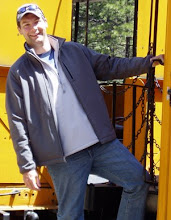http://www.asianartmall.com/clay.html
http://www.destination360.com/asia/china/terra-cotta-warriors.php
 The First Emperor of China chose this location 2200 years ago for his burial. Due to the mountains and the river, he felt this held the great Feng Shui. He became King of Qin at 13, at which time his burial was planned and construction began. He became the First Emperor of China in the Qin Dynasty in 221 BC, and died at the age of 49.
The First Emperor of China chose this location 2200 years ago for his burial. Due to the mountains and the river, he felt this held the great Feng Shui. He became King of Qin at 13, at which time his burial was planned and construction began. He became the First Emperor of China in the Qin Dynasty in 221 BC, and died at the age of 49. Outside of the largest pit that is excavated.
Outside of the largest pit that is excavated. This is a military planning room, considered Pit 3. The depth is roughly 15 feet to the floor.
This is a military planning room, considered Pit 3. The depth is roughly 15 feet to the floor.
 Pit 2 is only excavated to the top of the rooms that the warriors are in. In this picture it shows that the dirt has been removed that was on top of the lines of soldiers. after the soldiers were stood up, they placed wood trees across the top as a roof, then a bamboo mat, then the soil. The wood has disintegrated due to time, flooding, and fire (the pheasants burned most of the warrior tombs 1 year after completion). Only one warrior has been found completely in tact, all others have been pieced together over the years.
Pit 2 is only excavated to the top of the rooms that the warriors are in. In this picture it shows that the dirt has been removed that was on top of the lines of soldiers. after the soldiers were stood up, they placed wood trees across the top as a roof, then a bamboo mat, then the soil. The wood has disintegrated due to time, flooding, and fire (the pheasants burned most of the warrior tombs 1 year after completion). Only one warrior has been found completely in tact, all others have been pieced together over the years. Farmers digging a well found pottery pieces in 1974, which led to the discovery of the army. The sign marks the spot the farmers were digging.
Farmers digging a well found pottery pieces in 1974, which led to the discovery of the army. The sign marks the spot the farmers were digging.
 These have been assembled from on going excavation. Once completed, they will be returned to where they were located at originally. It took one sculptor 10 years to complete one figure!
These have been assembled from on going excavation. Once completed, they will be returned to where they were located at originally. It took one sculptor 10 years to complete one figure!
 To date, only 1,300 of the estimated 8,000 have been restored. They were all painted originally, but when exposed to air the paint disappears. Until they figure out how to prevent this, they have slowed their excavation of the site.
To date, only 1,300 of the estimated 8,000 have been restored. They were all painted originally, but when exposed to air the paint disappears. Until they figure out how to prevent this, they have slowed their excavation of the site.
 I couldn't catch a taxi to get back to my hotel from the bus station, so luckily a guy with a motorcycle and covered seat stopped by. It was raining and I was willing to pay the extra charge to get a ride! We went the opposite of traffic for most of the way! Beeping our way and squeezing between on coming traffic and bikes!
I couldn't catch a taxi to get back to my hotel from the bus station, so luckily a guy with a motorcycle and covered seat stopped by. It was raining and I was willing to pay the extra charge to get a ride! We went the opposite of traffic for most of the way! Beeping our way and squeezing between on coming traffic and bikes!
 Picture of the Bell Tower.
Picture of the Bell Tower.
 Pictures of the Drum Tower.
Pictures of the Drum Tower. 
No comments:
Post a Comment